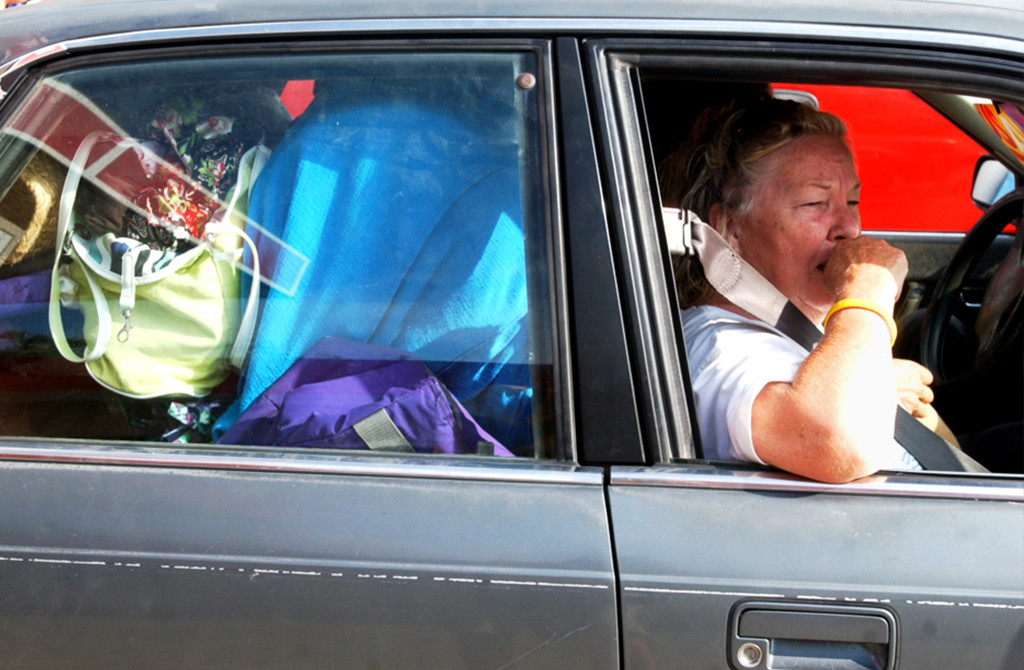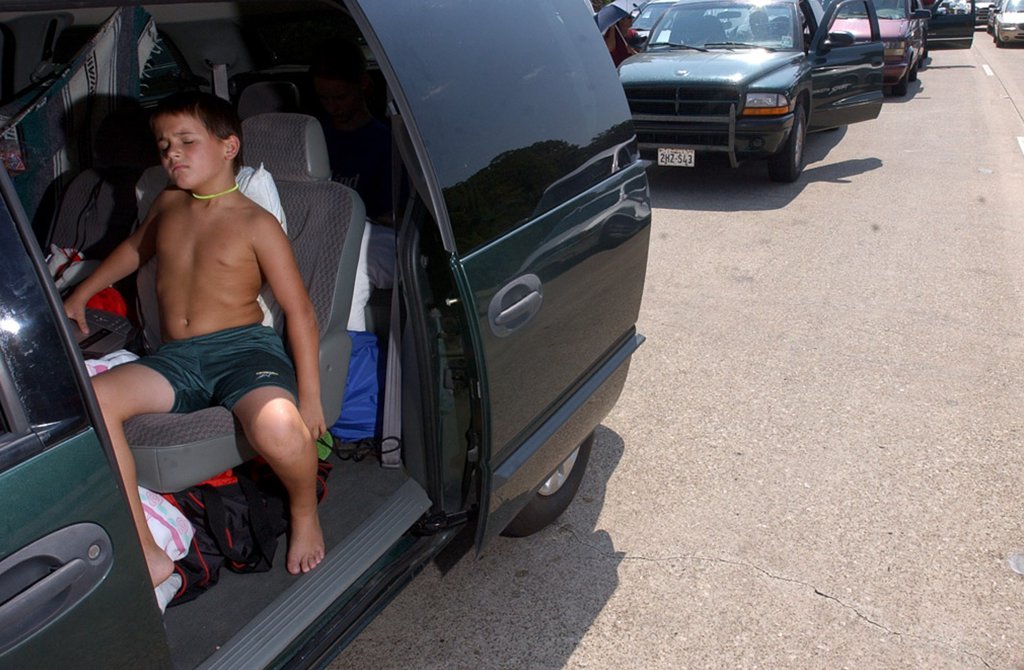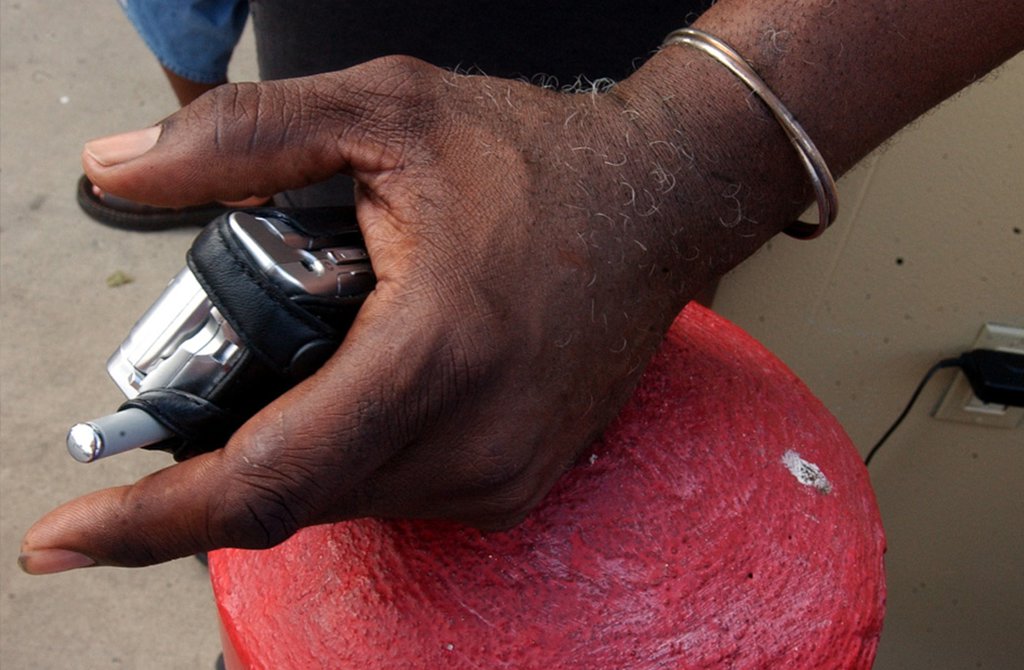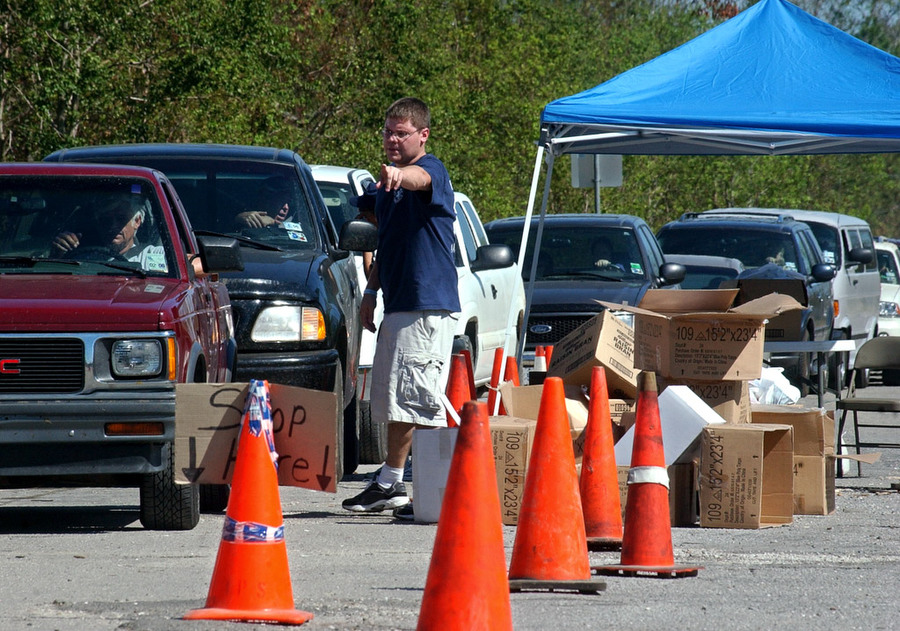It sounded like the roof was coming off, which is what woke up Dixie Jennings.
Jennings, her husband, their children and grandchildren prepared to leave. Rita’s winds howled, whipping in excess of 100 mph. Then a tree smashed through the ceiling of a room connected to their building.
The Jennings exited their cabin and ran for safety amid hurricane-force winds. They went down an embankment. Two other families were running, too. One man in another group slipped, breaking his collarbone. It was dark. More trees snapped.
Jennings and her family were not injured. They found safety.
What makes their story hair-raising is their encounter with Rita was not at their Sabine Pass home, but more than 150 miles away, at the Toledo Bend campsite they had taken up for shelter.
A 171-mile drive on roads clogged with traffic took Jennings 19 hours, she said, which put her average speed at 9 mph. After all that, Jennings’ family – 12 people and four dogs – didn’t even escape the storm.
Hurricane Rita altered evacuation plans for a generation of Southeast Texans in ways that are subtle and extreme. People who stayed behind vowed to never repeat their mistake. Some who left, after dealing with the transportation logjam, either pledged never to do it again or mapped changes to their routes. Others, like Jennings, knew they had to scrutinize their destination to avoid retreating to a shelter that is still vulnerable.
Grass was brown on all sides of the fence.
Today, as officials stress the importance of people evacuating their homes when instructed, residents cite several reasons when discussing whether they will or won’t listen.
They reference family, proximity to the coast, fear of violent winds and the scarcity of necessities after the storm. They also talk about jobs, hours in traffic, highway fuel shortages, generators, private water wells and, in one case, a home that is said to be a hurricane-proof dome
Rita showed that, in the worst cases, no matter the decision, few avoid suffering.
Some Will Always Stay
David Smith built a home north of Orange that will ensure he never has to evacuate for a hurricane, he said.
A foot of concrete supported by rebar and covered by an inch and a half of polyurethane foam gives Smith’s “dome home” the strength to withstand winds between 400 and 600 mph, he said.
While people who evacuate ahead of hurricanes often hang plywood to protect their windows, Smith said he will hang Plexiglas. He will spray it beforehand with Rain-X, a water repellant.
“I want to watch,” Smith said.
Smith was stationed at Fort Hood in Central Texas when Rita approached, so he didn’t have to fight traffic to get out of the storm’s path. But his wife and two children, who lived in a 700-square-foot mobile home in rural Orange County, had to leave. It took them four hours to drive four miles on Highway 12 to Highway 87, Smith said.
Many had poor experiences on the evacuation route. Summer temperatures threatened to overheat the slow-moving vehicles. Hours passed. Drivers turned off the air conditioners to conserve gas, so they didn’t wind up on the side of the road like that family a half-mile back. Parents changed their babies’ diapers inside hot cars. Everyday problems were compounded in the traffic jam.

“There was a cool breeze when there wasn’t a semi next to us,” Jennings said.
Partly because of the mass evacuation — estimated at more than 3 million people throughout Texas after Rita first aimed at Houston as a Category 5 storm — more people died on the road away from the hurricane than from its wind, tornadoes and storm surge. The hurricane’s weather itself was not directly responsible for a single death in Southeast Texas.
“I don’t want the hassle,” said John Flocke, a Beaumonter who said he won’t evacuate for another storm.
Flocke, who lives in Northwest Beaumont, said he has a water well, generator and a stock of food. His home sits high enough above sea level, at 28 feet, to put him outside the reach of flood waters, he said.
Flocke would still have to contend with wind and possible tornadoes.
Smith said that his home is invulnerable to those dangers, as well as to falling trees, and that his “fortress” is stocked well enough for him to survive weeks without electricity or city water.
“I’d be self-sustained,” Smith said. “You can cut it all off. I don’t care.”
Smith’s home is well-insulated. He cools the entire three-bedroom, 1,275-square-foot monolithic dome in the summertime with one window unit set to 72 degrees, he said. After a storm, he would need to turn the unit on only sporadically to keep the humidity down. For that, and to run power to his private water well, he has a generator.
Smith has access to a half-acre catfish pond. He has his own vegetable garden, whose yield he pickles. An entire cabinet is stocked with jars. To cook, he’ll rely on several canisters of propane.
“I’d go out there and camp in the woods,” said Smith, a car salesman and commander of the Golden Triangle Militia, a group of Southeast Texans that is seeking “reserve” status so the state can call upon it in cases of emergency. “I like the comforts, but I can survive out there in the woods, too.”
Storm Anxiety Lasts for Weeks
For the people who rode out Rita in their homes, anxiety swept in by swirling winds persisted for weeks while they managed the aftermath.
Necessities in the days following Rita were sparse. For people with bare cupboards, food was locked away in darkened stores. Physical activity during stifling days and nights, without the luxury of air-conditioned breaks, was draining. Public water and sewer systems were down, electricity sapped and roads blocked by debris.
“It was like a third world,” said Danny Williams, who rode out Rita in North Beaumont as a 29-year-old.
To leave Beaumont to go somewhere else for food, water or gasoline meant not being able to return, because state troopers were posted at the city’s access points to enforce a mandatory evacuation order. No one could enter during the order, which in Beaumont stretched for six days after Rita’s landfall.
Williams said he adapted. Community members pooled together meat from their refrigerators and freezers, keeping it cool with ice provided by service groups. They barbecued daily.
Williams owned a generator, but he paid $4 a gallon for gas to keep it running.
Now the father of 6-year-old twins, Williams said he would leave ahead of the next hurricane because he doesn’t want his kids to live through the aftermath.
“It’s the days after that were rough,” said Don Manganice, who was in his Groves home while the hurricane tore off his neighbor’s roof.
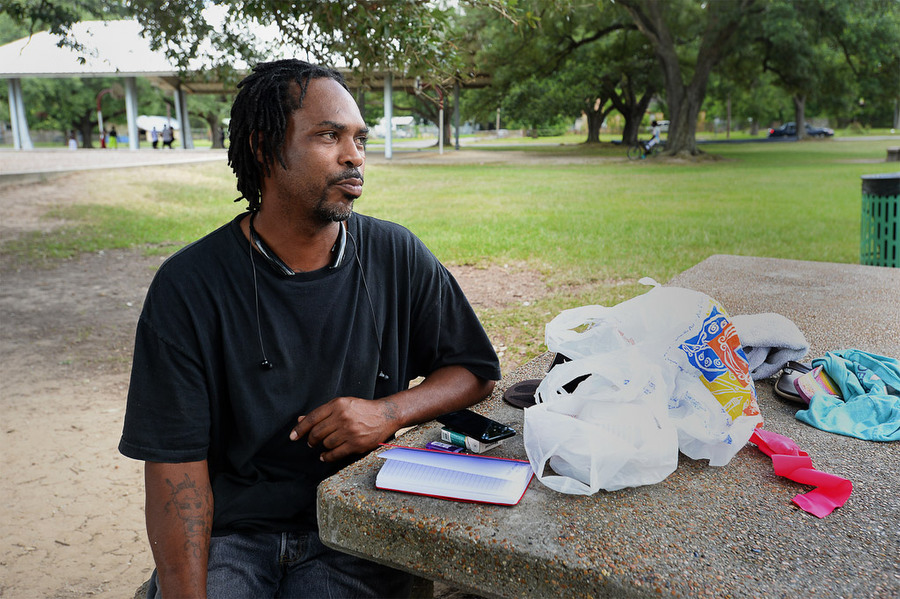

Rita’s winds left Manganice’s home without major damage, but he was fearful at times. Wind and debris kept up a steady assault against his Jefferson Street home in Groves with a force that sounded like gunfire, he said. Water blew into his kitchen.
“I just sat in the chair and listened to it, hoping it would go away,” he said. “Eventually, I went [to lie in bed and ... listened to it [in] my back bedroom, where I felt the safest place was.”
Manganice did not fall asleep. He waited for windows to break. They never did.
With his truck blocked in his garage for days afterward, Manganice rode a 1977 Honda XL-100, little more than a “street-legal dirt bike,” to the Tropicana Apartments, so that he could bathe in the complex’s swimming pool, he said.
Other times, he took cold showers in the dark. When he went out, he was greeted by another discomfort: unrelenting heat. He stood outside between houses, hoping they would channel the light breeze in his direction, he said.
Food was hard to come by until volunteer groups began handing out “Meals, Ready-to-Eat,” the rations produced for the U.S. Military to feed soldiers, Manganice said.
Manganice, who later rode out Ike, called himself “stupid” for not leaving. He said he won’t make the same mistake a third time.
“I didn’t think it would be that bad,” he said. “You could lose your life really easy on something like that. I can show you houses less than 200 feet from me that got a lot of damage. ... You don’t know, and why chance it?”
The Texas Tribune and the Beaumont Enterprise partnered for a project looking at the 2005 evacuation of Southeast Texas ahead of Hurricane Rita and whether a similar catastrophe can be avoided when the next big storm hits. This website was developed and designed by Ryan Murphy and Ben Hasson.




